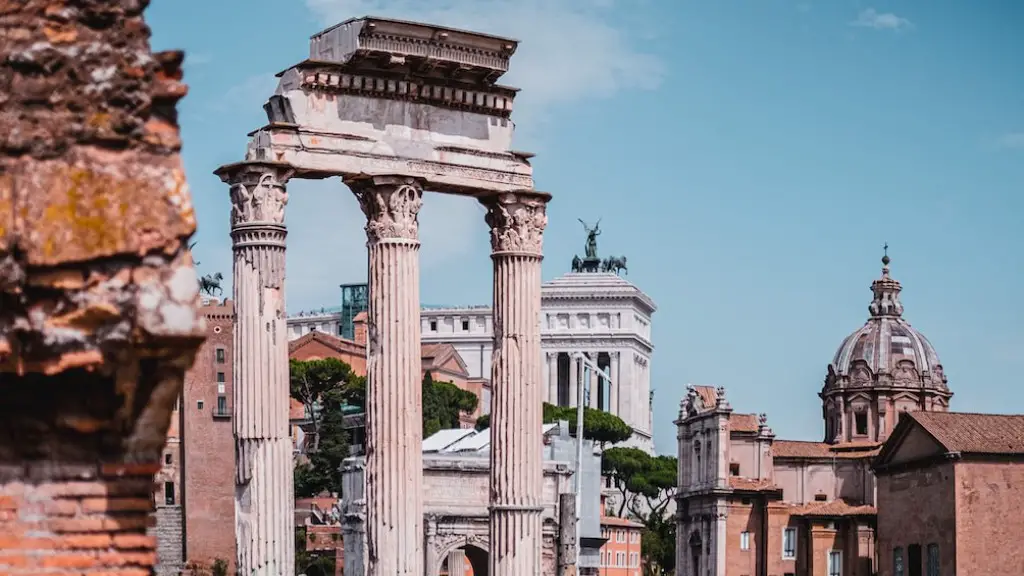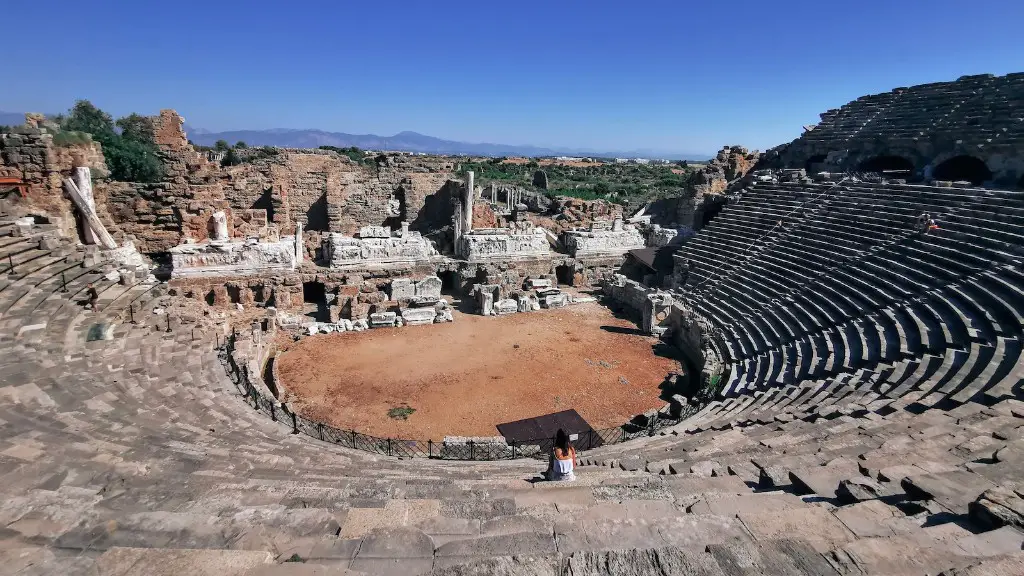Ancient Rome was one of the most powerful empires in the world for centuries. As a result, its culture has had a significant influence on the development of modern Western civilization. From the Roman Republic and Empire to the Byzantine Empire, various aspects of Roman culture have been adopted by subsequent societies. This includes the Latin language, classical architecture, and legal principles. Additionally, Roman art and literature have had a lasting impact on Western culture.
There are many ways that ancient Rome influence us today. One way is that the city of Rome was built on the seven hills. This design is still used in many modern cities, including Washington D.C. in the United States. Additionally, the Roman system of roads is still used as a model for many modern highways. The Roman legal system has also influenced modern legal systems, as well as the government system of many countries.
How did Rome influence the modern world?
The Roman influence in modern buildings is evident in both design and material. Roman elements such as domes, pillars, and arches can be seen in many modern buildings, while materials like tiles, bricks, and concrete are also common in today’s construction. Additionally, several types of buildings – from sports arenas to spas and apartment complexes – are modeled after Roman originals. This enduring influence is a testament to the lasting legacy of Roman architecture.
The U.S. Constitution was heavily influenced by the Roman Republic, which was a model of government that the Founders studied intently. Many features of the Constitution, including the system of checks and balances, the bicameral legislature, and the requirements for age and term limits, were borrowed from Rome. In some cases, the Founders even borrowed specific terms from the Roman constitution, like “senate,” “capitol,” and “committee.”
What are some examples of Roman influence on our lives today
The most obvious impact of the Romans that can still be seen today is their buildings. From military structures such as forts and walls (including the spectacular Hadrian’s Wall) to engineering feats such as baths and aqueducts, the Romans left a lasting legacy in the form of their architecture. Even though many of these buildings have been damaged or destroyed over the centuries, their influence is still evident in much of the architecture that we see today.
The American executive branch is modeled after the Ancient Roman model of two consuls elected by landowners for 1 year terms. The American legislative branch is also modeled after the Ancient Roman model, with two houses of Congress: the Senate and the House of Representatives. The American judicial branch is modeled after the Ancient Roman model of the Supreme Court.
What did the Romans invent that we still use today?
The ancient Romans were famous for their ability to build longstanding structures. Many of their iconic landmarks are still standing today, thanks to their invention of hydraulic cement-based concrete. This type of concrete is much stronger and more durable than traditional concrete, making it ideal for building projects that need to withstand the test of time.
Some things that we take for granted in modern life were actually invented by the ancient Romans! They were a very innovative people and their legacy can still be seen in many aspects of our daily lives.
What are three Roman contributions that are still used today?
Cement, roads, social care and welfare, Julian calendar, elements of surgery and the modern legal system are some of the things that the Romans have contributed to the world. Even now, their developments continue to touch our lives and contribute to the world.
The Roman empire was greatly aided by their invention of cement, which allowed them to build much stronger structures than before. This cement was used to build massive arches and domes that helped unify the empire. Additionally, the Romans built over 50,000 miles of roads with concrete, which helped to connect the empire. Finally, aqueducts were built to carry water from the rural areas into the cities, further improving the quality of life for Roman citizens.
What did Romans bring to us
The Romans had a profound impact on Britain, both in terms of culture and infrastructure. They introduced new towns, plants, animals, and a new religion. They also changed the way Britons read and counted. Even the word ‘Britain’ is derived from the Latin name for the island, Britannia. Without the Romans, Britain would be a very different place today.
Many people believe that the collapse of the Roman Empire was one of the worst disasters in history. However, you could argue that it was actually the best thing that ever happened. The reason for this is that the collapse of the Roman Empire led to the freedom of Europe from being ruled by a single power. Prior to the collapse of the Roman Empire, Europe was controlled by a single entity. However, after the empire fell, Europe was divided into many smaller states. This led to a more diverse and vibrant Europe, which ultimately led to the rise of Western civilization.
What did the Romans invent for us?
The Roman military medical corps was one of the first dedicated field surgery units in the world. They were responsible for many medical innovations, including the invention of many surgical tools and the pioneered the use of the cesarean section. Under the leadership of Augustus, the Roman military medical corps established a reputation for excellence and became a model for other countries to follow.
Roads were built by the Romans in order to connect different parts of the empire. These roads were made of concrete, which was a new invention at the time.
The Romans also invented medical tools for the battlefield, such as stretchers and ambulances.
The Julian Calendar was another Roman invention. This calendar was used for over 1500 years and is still used today in some parts of the world.
What are 4 contributions from the Roman Empire to modern life
The legacy of Ancient Rome is still felt today in western culture in areas such as government, law, language, architecture, engineering, and religion. Many modern-day governments are modeled after the Roman Republic, which was a constitutional government with three branches: executive, legislative, and judicial. The Roman Republic was influential in creating the modern-day democracies that we see in the world today. The Latin language is also still used in many modern-day languages such as Spanish, French, and Italian. Architecture and engineering are also disciplines that were heavily influenced by Ancient Rome. The Roman arch and concrete construction were two major innovations that are still used in modern times. Religion is another area where Ancient Rome’s legacy is still felt today. The Roman Catholic Church is the largest Christian denomination in the world and it traces its origins back to the early days of Christianity in Rome.
The legacy of Ancient Rome is still felt today in western culture in areas such as government, law, language, architecture, engineering, and religion. Many modern-day governments are modeled after the Roman Republic, and the influences of Roman law are still evident in many legal systems around the world. The Latin language has also had a lasting impact on the English language, and the architecture and engineering of Ancient Rome have been rediscovered and admired by architects and engineers in the modern era. Finally, the Roman Catholic Church is the largest Christian denomination in the world and its origins can be traced back to the early days of Christianity in Rome.
What Roman contributions still influence our lives today quizlet?
The Roman Empire was one of the most influential empires in history. Some of the things that the Romans did, such as creating a system of law and government, have shaped the way we live today. Additionally, the use of the Latin alphabet and language has had a lasting impact on literature and culture. Finally, Roman architecture, with its use of concrete, has been an important influence on building techniques and design.
Today, Romans is known for its deep and insightful theological assertions. It is a go-to text for Christians looking to understand key doctrines like justification by faith, regeneration, and sanctification. Romans can be a challenging text, but its rich and glorious message is worth wrestling with.
Warp Up
The influence of Ancient Rome on modern day society is vast and can be seen in many different ways. Perhaps the most obvious way that Ancient Rome influences us is through our language. Many words in English, French, Spanish and other languages have their origins in Latin, the language of the Romans. Secondly, Ancient Rome has left an indelible mark on our architecture. From the modern day cityscape with its grid like streets, to monumental buildings such as the US Capitol, St. Peter’s Basilica and the Colloseum, the Romans have had a profound impact on the way we build our cities. Last but not least, Ancient Rome’s legacy can still be seen in the way we organize our society. The Roman system of government, with its senate and system of law, has served as a model for many modern day democracies. In conclusion, it is clear that the influence of Ancient Rome is still very much alive in the world today.
The influence of ancient Rome is still evident in many ways today. Many of the concepts and institutions that we take for granted today were first developed by the ancient Romans. For example, the concept of private ownership of property, the rule of law, and representative government all have their roots in Rome. Even our calendar is based on the one first used by the ancient Romans. So, it is fair to say that the legacy of ancient Rome is very much alive in the modern world.





